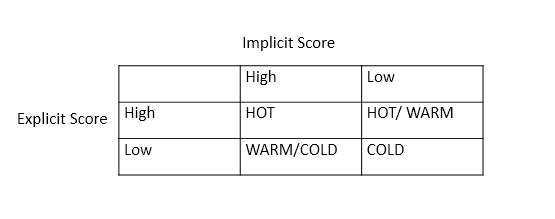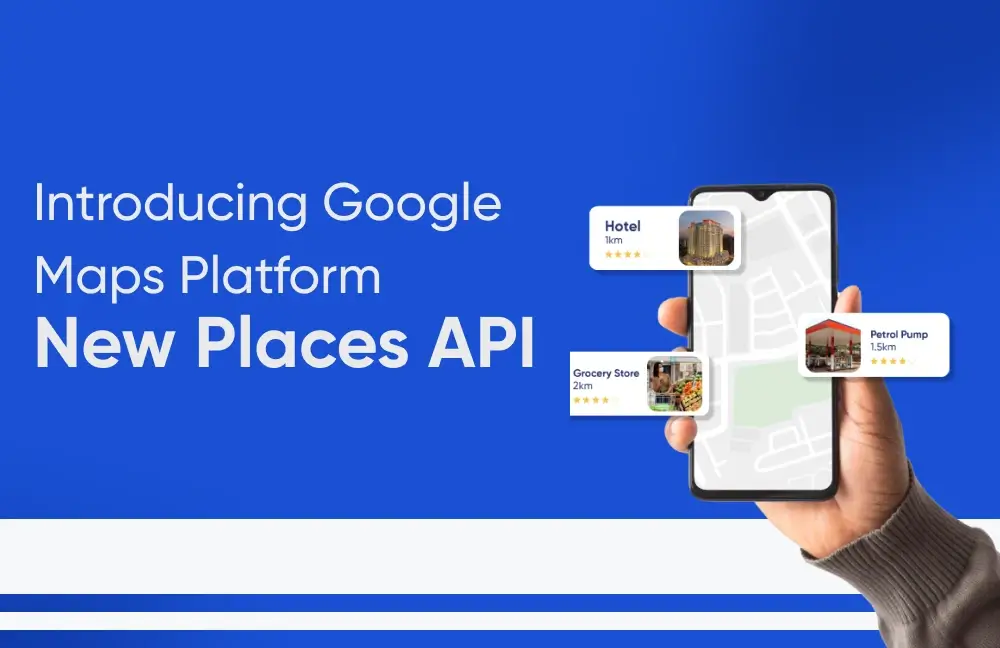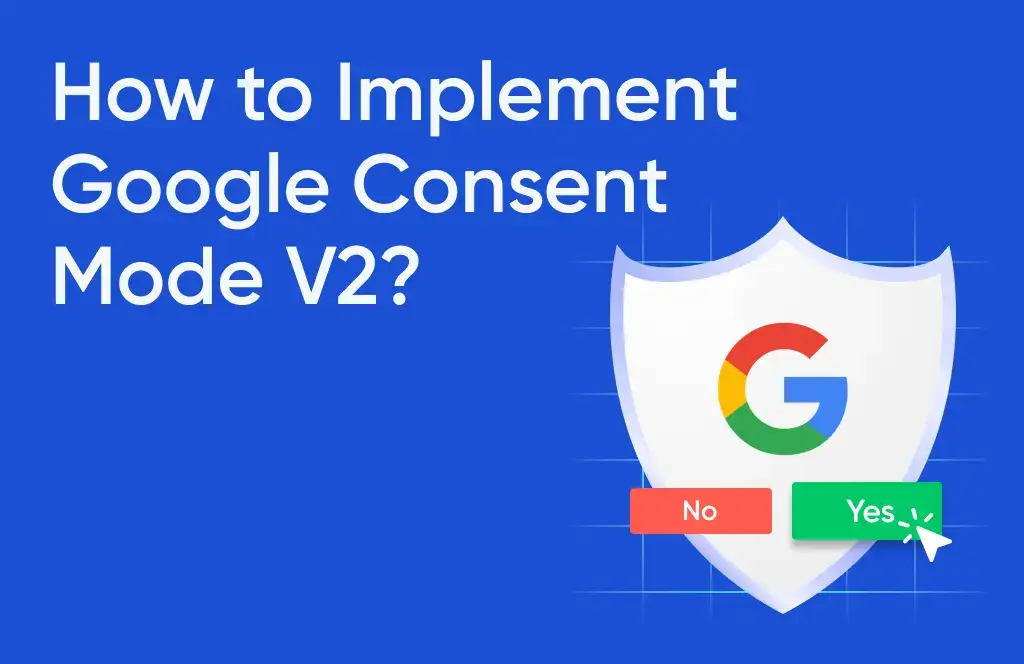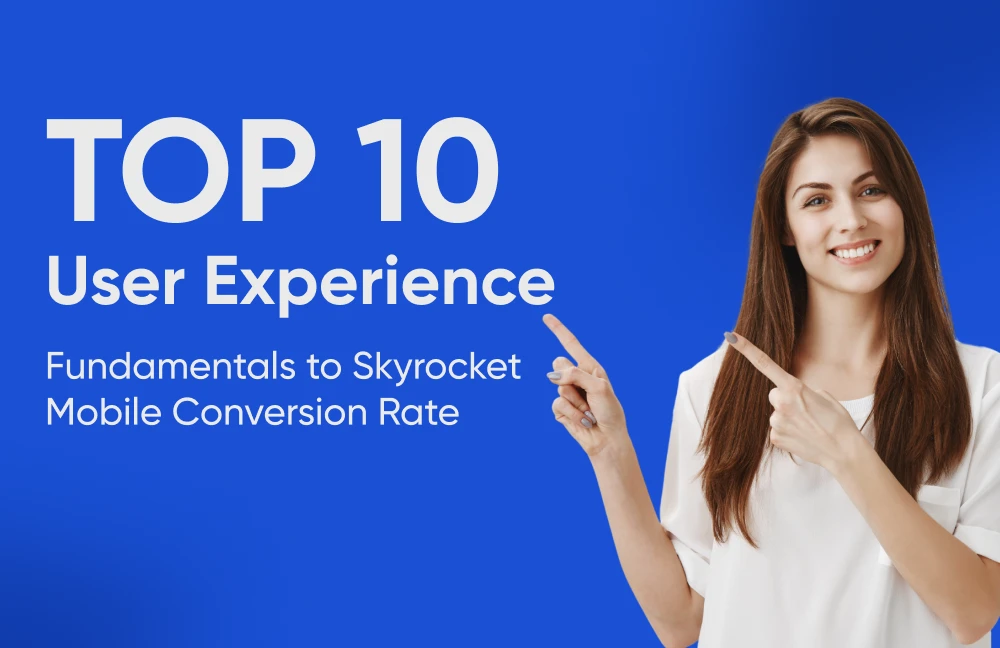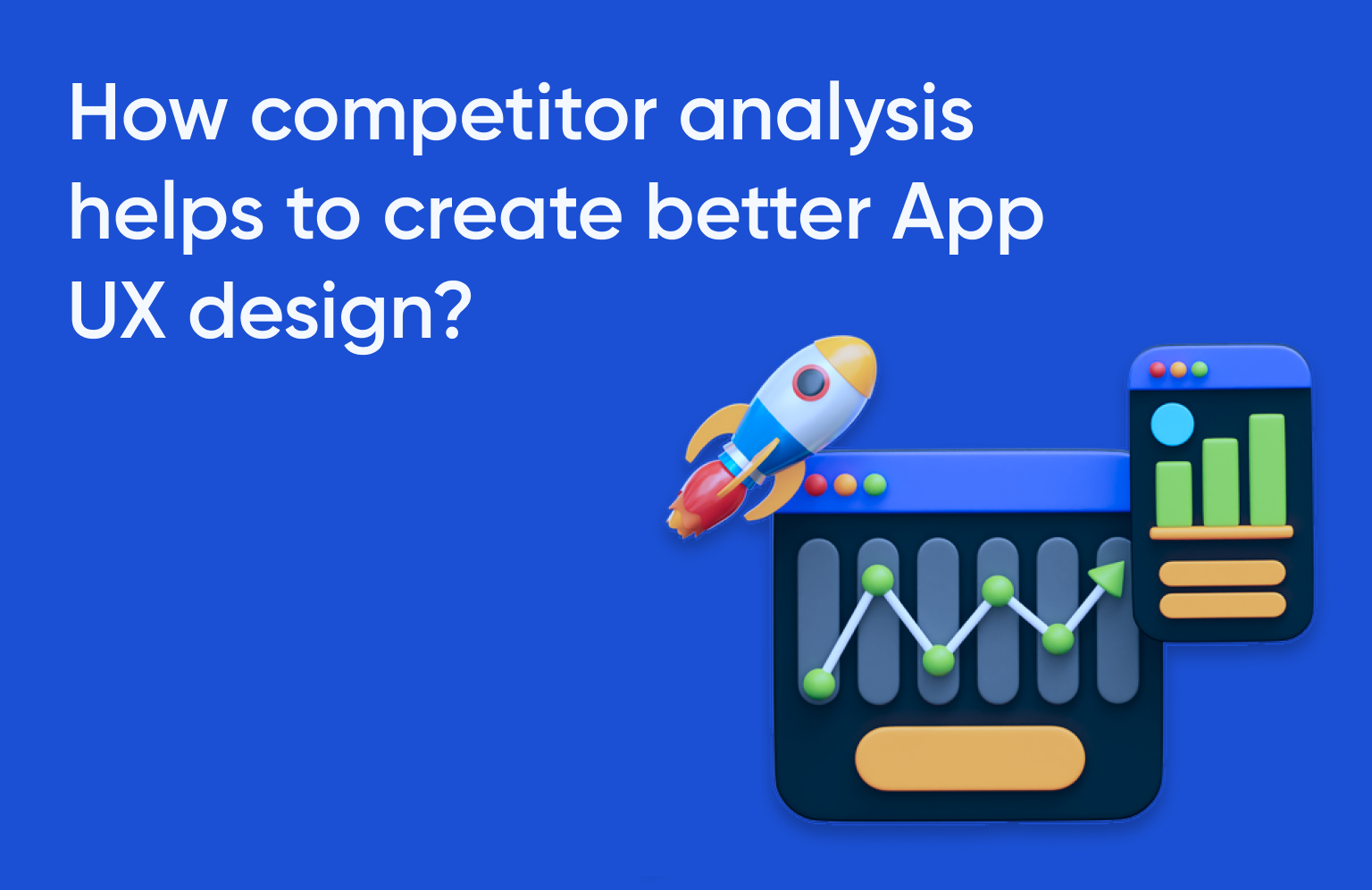
-
- Do you keep doing cold calling on your old database with out any directions?
-
- Do you have a high flow of leads but struggle at prioritizing them?
If the answer to any of the above question is yes, the potential solution to your problem could be a lead scoring analysis.
Lead Scoring Analysis helps sales and marketing professionals leverage their new & existing leads and segment them into different groups like warm, hot and cold. This helps them in identifying those people who have shown high interest in their product/service and are likely to convert.
What is Lead Scoring?
According to Sirius Decision, Lead scoring is defined as “A methodology used to rank prospects against a scale that represents the perceived value each lead represents to the organization. The resulting score is used to determine which leads a receiving function (e.g. sales, partners, teleprospecting) will engage, in order of priority.”
To Sales & Marketing teams, it gives a clear idea of how many people are on the top of the funnel (started showing interest in your resources) and how many are ready to be pushed for a sale.
The New Buying Behavior & Why Rethink Your Sales & Marketing Process
Nowadays, most of the buyers make buying decision before getting in touch with a sales rep. With excessive amount of information available online, most buyers prefer to do research first hand before getting in touch with any sales representative.
For example, In a research carried out by Google and CEB it was observed that
[Tweet “57 % of B2B buyers had already completed their sales before getting in touch with any sales rep”]
This is completely opposite to the conventional buying behavior where a buyer gets in touch with a sales rep to research about a product/service and then makes a buying decision.
Today, Buyers do not approach any sales representative unless they have some information about the product/ service. Hence, sales reps need some system that can help them identify the list of potential buyers that have engaged well with their products/service in the past and are now ready to approach them.
The objective of lead scoring analysis is to help drive more revenue through sales in accelerated cycles. Lead scoring helps a marketing team about leads to nurture and that need immediate follow up and engagement with sales or channel partners.
Lead scoring when employed – it can provide multiple benefits that all impact revenue generation. Firstly, lead scoring helps marketing team to evaluate and improve the effectiveness of a campaign and content strategy. Scoring helps sales focus on the priority opportunities that have the best chance of closing in the shortest period of time. Scoring impacts how effective sales forecasts are as well.
In a study by Eloqua, it was found that
[Tweet “Deal closed rate increased by 30 percent when a B2B organization uses a Lead Scoring System”]
Lead Scoring Basics:
Lead Scoring is based on two important data points- Implicit and Explicit. When quantified, both these set of data then can be converted to one single lead score for each given lead.
Implicit Lead Scoring:
Implicit Lead Scoring refers to any type of online interaction that a potential buyer has with your website. Some of the most common interactions include downloading a whitepaper, watching a webinar, reading a blog post, product page visit or a pricing page visit.
Consider an example of Ryan who visits your website and performs the following actions as shown in the table below. On the right hand side of the table, we have scored each of the interactions (on the scale of 1 to 10) based on how this activity shows his sales readiness. The scoring can be done manually or you can use Google analytics page value metric.
|
Implicit Behavior |
Score |
| Downloading a Resource White Paper | +5 |
| Watching a Webinar | +5 |
| Downloading a Product Page Whitepaper | +10 |
| Pricing Page Visit | +7 |
| Reading a blog post | +3 |
Action Item:
· List down your five important implicit behaviors
· Give them a score depending on their importance.
Explicit Lead Scoring:
Explicit scoring refers to the information that your potential buyer provides you on your website i.e. a potential buyer giving you information through a lead gen form. Information such as Company Size, Industry, Location, and Position are used in explicit lead scoring.
You will need a clear idea about your target customer before you give a score to explicit behavior. You should have a buyer persona in your mind to carry out explicit lead scoring successfully. For instance – your target market is USA, Industry – IT and you offer solutions to companies with size 1000+.
|
Explicit Lead Scoring |
Information |
Score(out of 10) |
| Company Size | 700 | +7 |
| Location | USA | +10 |
| Industry | IT | +10 |
| Position | Senior Executive | +5 |
As you can see in the above example, we gave the scoring based on our ideal buyer persona giving Location, Industry the highest score.
Action Item
· List down Your Five Explicit Behaviors
· Take out a potential buyer profile from your database
· Score them based on your ideal target audience.
Best Part of Lead Scoring – How to identify the sales ready lead?
The sexiest part of lead scoring is to identify the sales ready lead. Now that we know how to calculate the implicit and explicit lead scoring we can identify the potential buyers sales readiness through this matrix.
Consider the above matrix, and take the example of a potential buyer that we have taken in implicit and explicit lead scoring. The Explicit Lead Score(Demographic Score) was 42 and the Implicit Lead Score(Behavior Score) was 30. So placing the potential buyer in the matrix, we have a clear idea that he is interested in our service and can be passed on to sales representative.
6 Steps To Set Up Your Lead Scoring System:
Follow the below mentioned steps to build you first lead scoring system. Remember that to execute these steps you may need help of your web analyst team & the developer team.
Step 1: List down your explicit factors
Explicit factors refer to the information that your potential buyers provide you explicitly on your website. It includes Potential Buyers Company Name, Company Size, Industry, etc. A good place to start listing down your explicit factors are generally your resource download forms like whitepaper download forms or contact us forms.
Examples of explicit factors:
- Company Size
- Location
- Industry
- Position
- Budget
- Purchasing Authority
- Interest
Step 2: List down your implicit factors
Implicit factors refer to the interaction of the potential buyer with your website content. Your implicit factors may include whitepaper downloads, webinar registrations, e-book downloads or email link clicks. A good place to start listing down your implicit factors will be to start looking at the Free & Gate Resources on your website.
Examples of implicit factors:
- Whitepaper Download
- Webinar Registration
- E-book download
- Product Page Visit
- Email Link Click
Step 3: Capture Your Explicit Data from CRM
We assume that you have a CRM system in place where you store the information of your potential buyers. If you do not have a CRM system, you can ask your development team to create a database to store the data of your potential buyers. Once you have all the required explicit data of your potential buyer in one place, you can export them into a spreadsheet.
Note: Your CRM data should be organized in such a manner that it can be mapped against a single visitor id/ potential buyer. This will make it easy for you when you create your lead scoring analysis spreadsheet in step 5.
Step 4: Capture Your Implicit Data from Google Analytics
Implicit factors such as Whitepaper Downloads, ebook downloads, webinar registrations can be tracked using Google Analytics and can be mapped against a single visitor id/ potential buyer. It is great if you have a tracking in place that provides you with this information or else you can always ask your web analytics team to set up a similar tracking Setting up a tracking will provide you all the implicit factors in one place, which again you need to export into a separate spreadsheet.
Step 5: Combine all your data into single spreadsheet
Now that you have both the explicit & implicit information available in two different spreadsheets, you can create your Lead Scoring Analysis Template. Following is an example lead scoring analysis template (Download Sample Template)
(Lead Scoring Analysis Example)
Step 6: Start scoring your leads
Now that you have added the explicit and implicit factors into your lead scoring analysis template, you can start scoring your leads based on this data. To identify whether your potential buyer is hot, warm or cold, you can create a lead scoring model as shown below.
Where,
Hot – Potential buyer is ready to be forwarded to a sales rep.
Warm – Potential buyer is still in the nurturing stage
Cold – Potential buyer has just started to interact with your online content and is ready for lead nurturing
Various Lead Scoring Situations:
In the example covered in the blogpost, the potential buyer has a high explicit and implicit score. This is indicative of the fact that the buyer has shown interest in our product/service and is also ready to meet our sales rep. Since, this it covers only one scenario, let us take a look at different scenarios you may face while scoring your leads.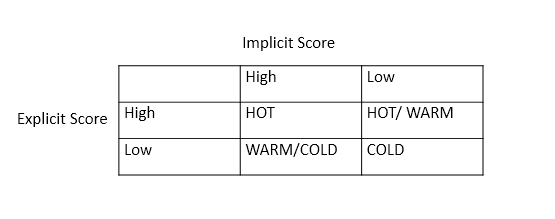 (I) If the Explicit Score is High and Implicit Score is High
(I) If the Explicit Score is High and Implicit Score is High
This refers to a situation where a potential buyer has interacted well with your online content i.e. downloaded whitepapers, registered in webinars as well as shown interest in your product by requesting a demo or clicking the product link in the email. The potential buyer is interested in your product and hence can be approached by a sales rep.
(II) If the Explicit Score is High and Implicit Score is Low
This refers to a situation where a potential buyer has interacted less with your online content but shown interested in learning more about your product/ service by asking for a demo or downloading the white paper on the features of your product. Potential buyer is again clearly interested in your product and hence can be approached by your sales team.
(III) If Explicit Score is Low and Implicit Score is High
This refers to a situation when a potential buyer has interacted well with your online content i.e. downloaded eBooks, attended webinar, tweets/share’s your content but has shown least interest in your product (like no visits on your product page or pricing page). In this case the potential buyer is either in the nurturing stage or may be a potential buyer you are targeting and hence can be ignored.
(IV) If Explicit Score is Low and Implicit Score is Low
This refers to the situation when a potential buyer has just started interacting with your online content and has given you some demographic information via an online form. As he has just started interacting with your online content, you will want to nurture the buyer by offering him content that may help him in his research.
Conclusion:
Lead scoring is an important exercise which can improve your overall sales effectiveness. It helps organizations in identifying potential prospects; prioritize leads based on their fit and interest level and help you understand if a prospects need to fast tracked to sales or to be nurtured.
We hope that the steps mentioned in this post will enable you to build a lead scoring system of your own. Do get in touch with me on twitter or mrugesh@www.tatvic.com for any further information you may need and would be great to help you out further.

